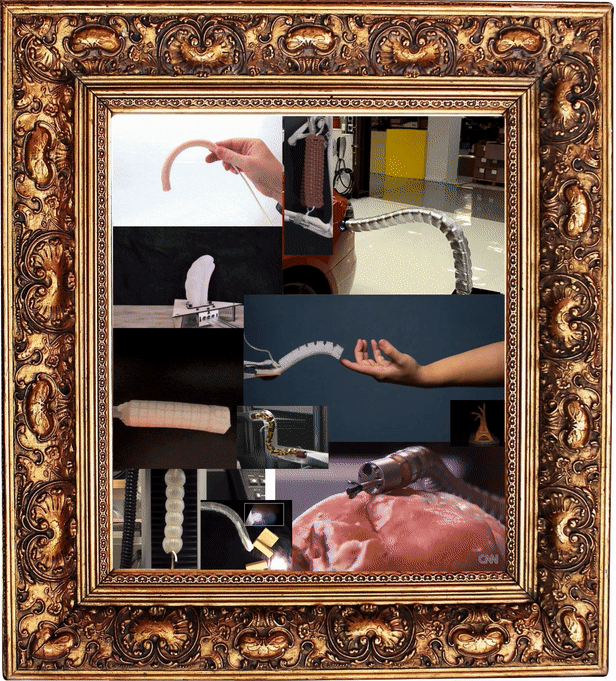Scientific Phallicy
Johanna McAllister (2020)Scientific Phallicy by Johanna McAllister :: Supported by FRFAF (#2020-011) from STUDIO for Creative Inquiry on Vimeo.
Johanna McAllister, a CMU undergraduate pursuing a self-defined arts degree in Integrated Tangible Media, has spent several years investigating novel smart materials for socially taboo synthetic body tissues. McAllister’s core question is: What can a neophallus be? With the support of Grant #2020-011 from the Frank-Ratchye Fund for Art @ the Frontier, McAllister’s research (spanning material science, robotics, and bioengineering) has focused on the design of “Neo-Synthetic Erectile Tissue” or NeoSET, a smart-material reimagination of penile implants designed specifically for transsexual men.

McAllister writes: Scientific researchers seek to inspire creators into using more and more complex systems in order to create what hasn’t been possible before. They must also accept the responsibility to challenge creators to use more and more complex social issues to create what has not been made before. In this case, avoiding applying research to penises has meant even less research has been done on transsexual female-to-male gender affirmation surgeries. With NeoSET, my research collective proposes the advancement of the neo-phallus.
Phalloplasty varies depending on the desires of the person gaining a penis, what resources are available to that person, and which type of phalloplasty they decide to pursue. Generally, most new penises are made by stretching a person’s skin, cutting off that stretched skin, rolling and shaping the skin into a penis, and grafting it onto their genital area. That’s a real penis! Once they have a penis, some people opt to receive penile implants, which serve as synthetic, manually-operated erectile tissue. The most modern penile implants for trans men are derivative of erectile dysfunction implants designed for cis-sexual men.
What more could implants be? How can we design for a more diverse array of penises? This animation serves as a quick visual aid to better understand what a penile prosthetic is and why. It showcases an early prototype of NeoSET, Neo-Synthetic Erectile Tissue, designed by me and my small team of independent researchers, supported by the Frank-Ratchye Studio for Creative Inquiry. NeoSET exploits the most novel tangible technological frontier of smart-materials for the under-researched field of neo-phalluses.

As part of her research, McAllister has also sought to educate the public about gender-affirming phalloplasty. She writes: The goal of this lounge and visualization of scope of information was to create a comfortable, inclusive environment to comfortably discuss transgender bottom affirmation surgery and the applied science that forms the literary foundations of my teams’ penile implant research. In this way, the installation was ultimately a success. I discussed with a wide variety of people, from a trans chemist who dreams of a robo-penis himself, to a cis-sexual man who wanted to learn what ‘transgender’ even means. My conversations ranged from straightforward lectures describing transsexual phalloplasty to thorough dialogues about the edges of sexuality.



